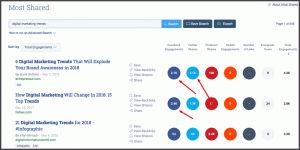There’s a phenomenon that occurs quite often where various functions run to the HR department presenting their case of being drastically understaffed. They desperately seek help to hire several candidates all at once pressuring HR professionals to frantically hunt for talent, screen them and get them onboard. Often these situations arise outside the boundaries of what’s agreed in the annual resource planning exercise. And it’s not just any particular month of the year – it happens randomly and several times in a year.
Unplanned and sporadic mass hiring can be quite counterproductive, even if you’re able to meet expectations and fill the sudden vacancies. Under such pressure you’re bound to compromise on the quality of talent and most likely be cutting a few corners in the hiring process just to meet the numbers. Though at the moment it’ll seem like everyone’s met their objective, in the long run you’ll realize the mistakes of hiring in such a manner. That’s when you’ll potentially see certain individuals who were quickly hired as possible weak links in the team. You may even experience higher turnover than normal, or worse, that you hired more than needed.
While there’s little you can do to avoid “natural attrition” you certainly can prevent “wrongful” and over hiring if resource planning is a well thought out. Here are a few tips to strengthen this crucial exercise that can save you from much stress, financial losses and even reputational damage.
1. Your Current Bench Strength
The first, and probably the obvious, place to start is to take a look at the resources each function presently has. Studying bench strength is more than just identifying who’s a top performer and who’s the weakest link. You’ll need to dig down deeper and evaluate skills, qualifications and experiences and map them against how they can be utilize best to help each function achieve its next year goals. Ask functional heads these important questions:
- Are the skills and abilities of each resource being optimally utilized?
- Are particular skills that are critical to your function missing in your present team?
2. Resource Development Plans
At the end of each year most functional heads are considering promoting their top performers. This creates an opportunity for them to further exploit their talent by enhancing their responsibilities and challenging them further. Along with this, it also creates vacancies left by the promoted resources. When sitting down to discuss resource planning an important aspect to consider is how these promotions impact the dynamics of each team. Another aspect to talk about is training. Trainings can play a valuable role in enhancing skills of individuals and could possibly reduce the need to hire many new resources.
3. Where’s the Company Headed
No resource planning is complete or accurate unless it’s directly linked and correlated to the company’s growth plans. HR professionals need to fully understand the direction, strategies and objectives of the business in order to play a pivotal role as a support function that facilitates this growth. You’ll be looking into sales volumes, product development plans, new ventures and business opportunities, expansions and even new functions being created. Understanding the future of the business will provide you a clearer picture of the talent gap you have. Also keep in mind the timelines of these growth opportunities so that the increase in resources is linked to it.
4. The Role of Technology
If your company embraces technological changes rapidly, then you’ll need to consider what skill enhancement your resources will need, who’ll be trainable and who won’t, and what new resources you’ll need to smoothly operate each function. Technology can play a vital role in reducing the need for resources so instead of hiring new resources, you may be looking at reducing the numbers next year. Hence, it’s important to be aware of the skill sets you’ll require in the coming months and perform your resource planning accordingly.
5. Build A Strong Talent Pipeline
Once you’re able to chalk out the resources you’ll need and when you’ll be hiring them, it’s a great idea to lay out your recruitment strategy. Every function turns to HR for solutions when it comes to hunting talent and this is your moment to shine. Evaluate each position that will be hired next year and identify your sourcing outlets. It’s not even a bad idea to start talking to some of the talent that’s out there and building a relationship with them. The idea is to avoid being caught napping and feel the hiring pressure. Instead be proactive with the information you have thanks to the resource planning exercise.
A well-thought out resource plan can save companies, its various functions and HR a lot of stress, argument and wrongfully hired employees. It’s probably a good idea to start early in the last quarter and not wait too long until late November or even December. Give yourself ample time to look over every angle and aspect of resource planning so that you can minimize mistakes and risks.
Business & Finance Articles on Business 2 Community(24)
Report Post




